Our Pencil Portrait Lesson explains and illustrates each stage of drawing a portrait from the initial outline to the subtle tones and textures of the finished work. Our step by step approach allows you to see each stage of development that you need to work through in order to achieve an image of satisfying quality.
Our section on Portrait Features helps you with the problems that you meet when drawing the eyes, nose, mouth and ears. Each feature has its own difficulties which we guide you through in our illustrated lessons.
Our section on the Proportions of the Head helps you to measure the size, calculate the shape and position the features of a face in your drawings. If you follow these basic rules of proportion you should notice an improvement in the accuracy of your portraits. These measurements are something that you need to understand before you start any portrait.
Our Pencil Shading Techniques will enable you to practice the skills you need to improve your ability to render tone and form. You can copy and print a free exercise sheet to test your shading technique.
An Introduction to Pencil Portrait
LEONARDO DA VINCI (1452-1519)
'Bust of a Warrior' c.1475, silverpoint.
Silverpoint was an early forerunner of the modern pencil. It was a popular medium for detailed drawing during the Late Gothic and Renaissance periods. Silverpoint images were created by drawing a sharpened rod of silver across a primed surface. The original drawing appears grey at first, but gradually oxides over several months to form a warm brown image. Lead and tin were also used as metalpoint drawing media but the most delicate effects were achieved with silverpoint.
One of the greatest examples of the silverpoint technique is Leonardo’s 'Bust of a Warrior'. The artist's masterful drawing skills are evident in the manner he conveys the lumpen features of the soldier's battle-torn profile and the elaborate decoration of his ornamental armour in line alone. The rhythm of his technique doesn't miss a beat as he switches from depicting soft flesh to representing hard metal with an absolute confidence that few artists possess.
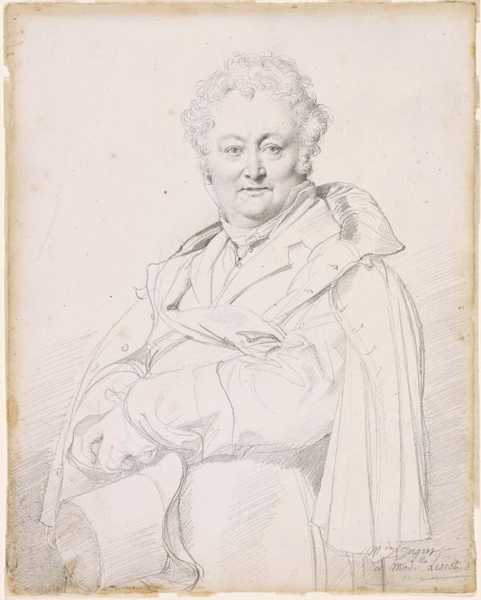
JEAN-AUGUSTE-DOMINIQUE INGRES (1780-1867)
'Portrait of Guillaume Guillon Lethière' 1815, graphite.
Graphite succeeded silverpoint as a popular drawing medium in the 16th century as it could produce darker lines and tones than metalpoint media. As it was softer and more easily broken, graphite sticks were originally bound with string which in due course was replaced by wooden casings giving rise to the modern pencil.
Jean-Auguste-Dominique Ingres, the famous French neoclassical artist, placed a significant emphasis on the quality of his drawing. His graphite portrait sketches which stand as artworks on their own, had a strong influence on the art of Degas, Picasso and Matisse in the century to follow. Many of these small studies were produced out of the necessity to put bread on the table as Ingres was stranded in Rome when he lost his patronage after the abdication of Napoleon from the thrones of France and Italy.
Ingres' study of Guillaume Guillon Lethière, the director of the French Academy in Rome, is typical of his drawing style. The confidence and subtlety of his modulated line captures an accuracy of form that is only achievable when experience is combined with a rare talent. The linear rhythm and harmony of the figure build to a crescendo in the tones of the face which lift the drawing to another dimension. With an economy of means Ingres captures both a physical and psychological likeness of his subject revealing a sureness of touch and intensity of observation that characterise his outstanding draftsmanship.
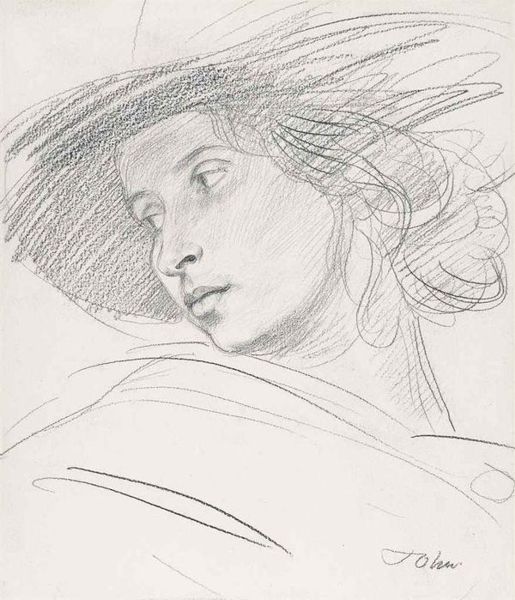
AUGUSTUS JOHN (1878-1961)
'Dorelia in a Hat' c.1907, pencil.
Another artist who was considered to be the outstanding draughtsman of his generation was the Welsh painter, Augustus John. The legend goes that he began as a quiet conventional student at the Slade School of Art until he suffered an accident while on his summer break, when he dived into the sea and hit his head on submerged rocks. After the accident he emerged as a transformed character: a self-assured, promiscuous rebel whose bohemian behaviour was backed up by a remarkable new-found virtuosity.
The sketch of his second wife Dorelia (Dorothy McNeill) illustrates the precarious balance between control and unrestrained expression that identifies his masterly drawing technique.
Click on the flip icon to view each image.
7
Many artists use pencil studies as preparatory sketches for portraits. Their aim is to gather as much visual information as possible, particularly if their model is only available for a limited time, and pencil is ideally suited to this task.
Degas pencil portrait of his aunt Laura, the Baroness Bellelli, is a first-hand drawing in preparation for his life size painting of 'The Bellelli Family'. This was drawn during a visit to the Bellelli home in Florence and painted from a series of pencil studies on his return to Paris. Laura's thousand yard stare clearly reflects her state of mind: she was both pregnant and in mourning for her father whose portrait hangs on the wall behind her, and the isolated placement of her husband Gennaro suggests the breakdown of their relationship.

pencil on paper.
Pencil on paper is the most simple, immediate and economic of all art media and Matisse demonstrates this to the utmost in his drawings. He saw simplicity as the key to Fauvist expression when he explained, 'We move towards serenity through the simplification of ideas and form......Details lessen the purity of lines, they harm emotional intensity, and we choose to reject them. It is a question of learning, and perhaps relearning the 'handwriting' of lines.' In 'Tête de Femme 1935' Matisse places less importance on the observation of accurate detail and more on the correlation of his hand, eye and memory to bring out the sensuality and immediacy of his subject with simple unconstrained line.
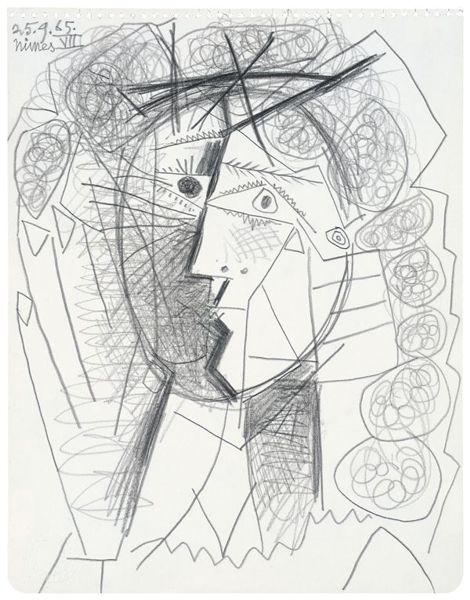
PABLO PICASSO (1881-1973)
'Tête de Femme 1965', pencil study from sketchbook.
Pencil is the most convenient medium for exploring your ideas. In Picasso's 'Tête de Femme 1965', one of a series of female heads from a 1965 sketchbook, the artist takes the idea of 'relearning the 'handwriting' of lines' to a primal level. He draws like a child in the moment, released from the limitations of learning to freely explore what he feels about the subject.
This study recalls those synthetic cubist images of his mistress Dora Marr from 1937. The front-facing head that contains its own profile, the deconstructed eyes (three of them), the reconstructed planes of the face, the child-like schema of her curly hairdo with its electrified outline and birds nest hat, and the simplified hand with its arrowhead fingernails are all drawn from the visual vocabulary of Picasso's 'relearned handwriting'.

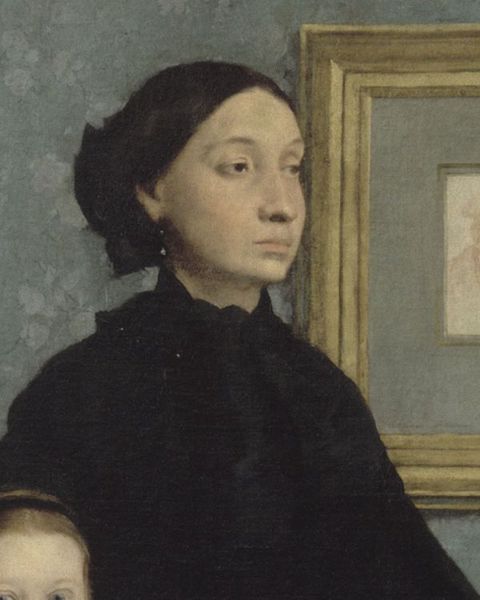
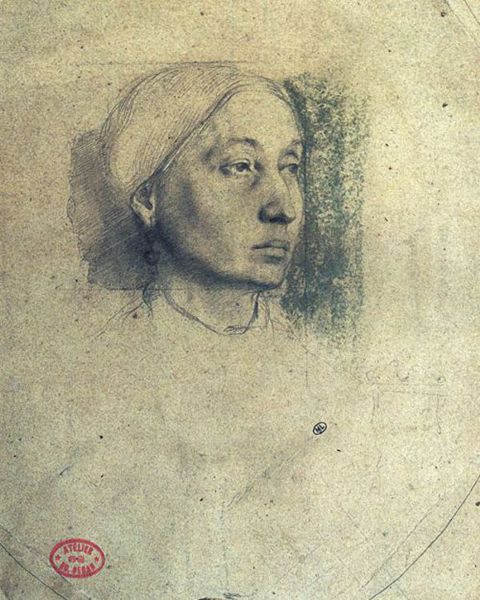
Comments
Post a Comment
Kindly comment below and subscribe to receive updates from us